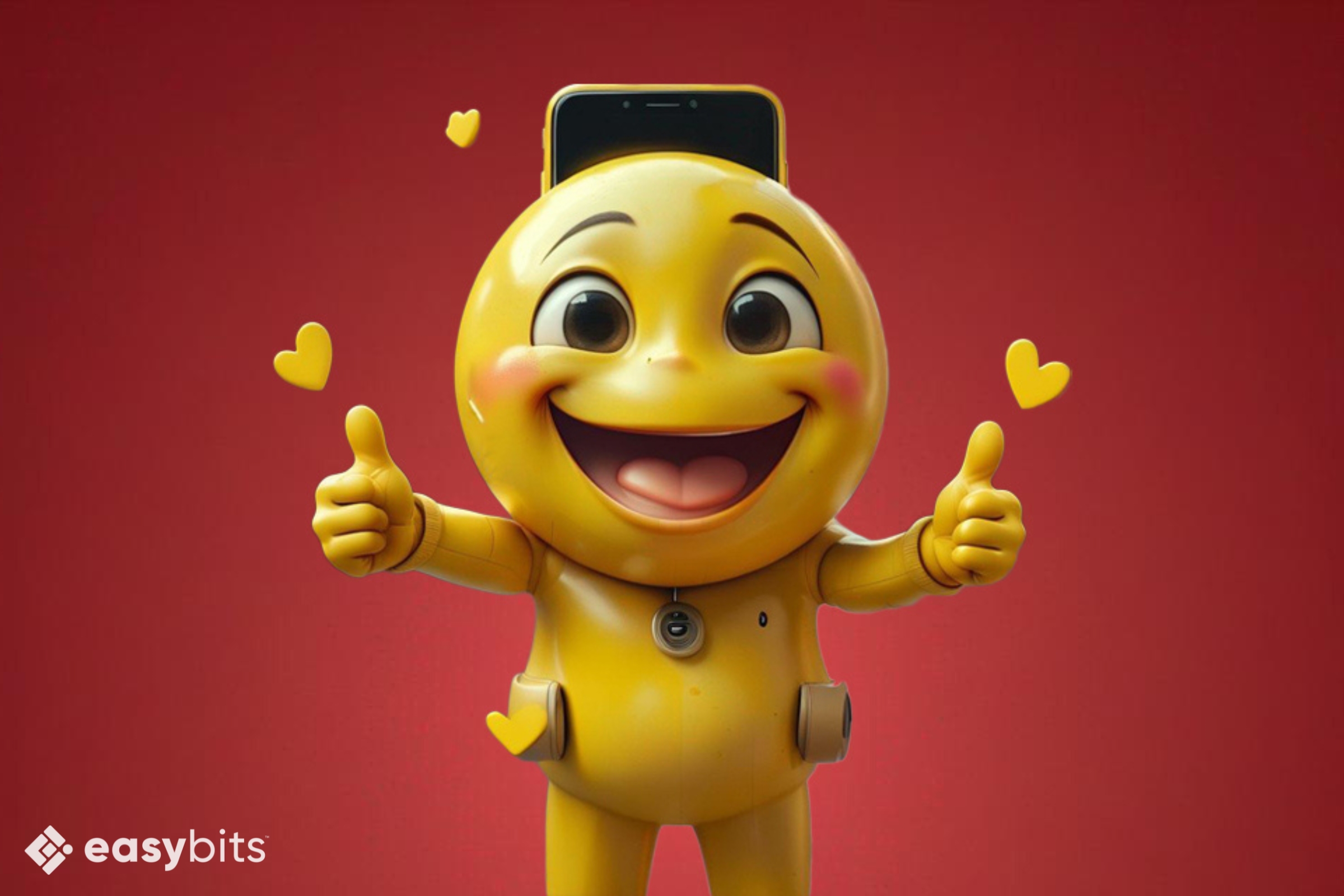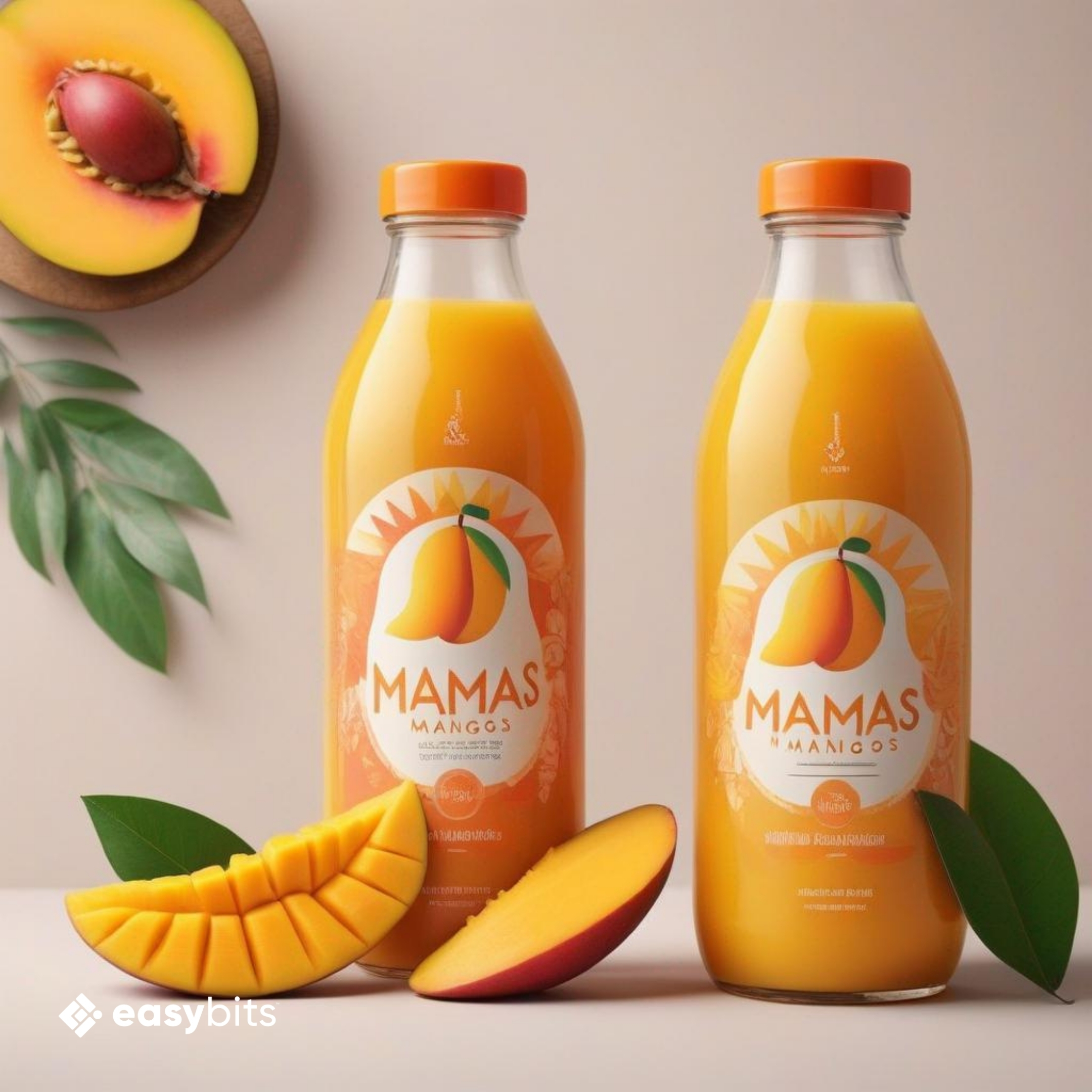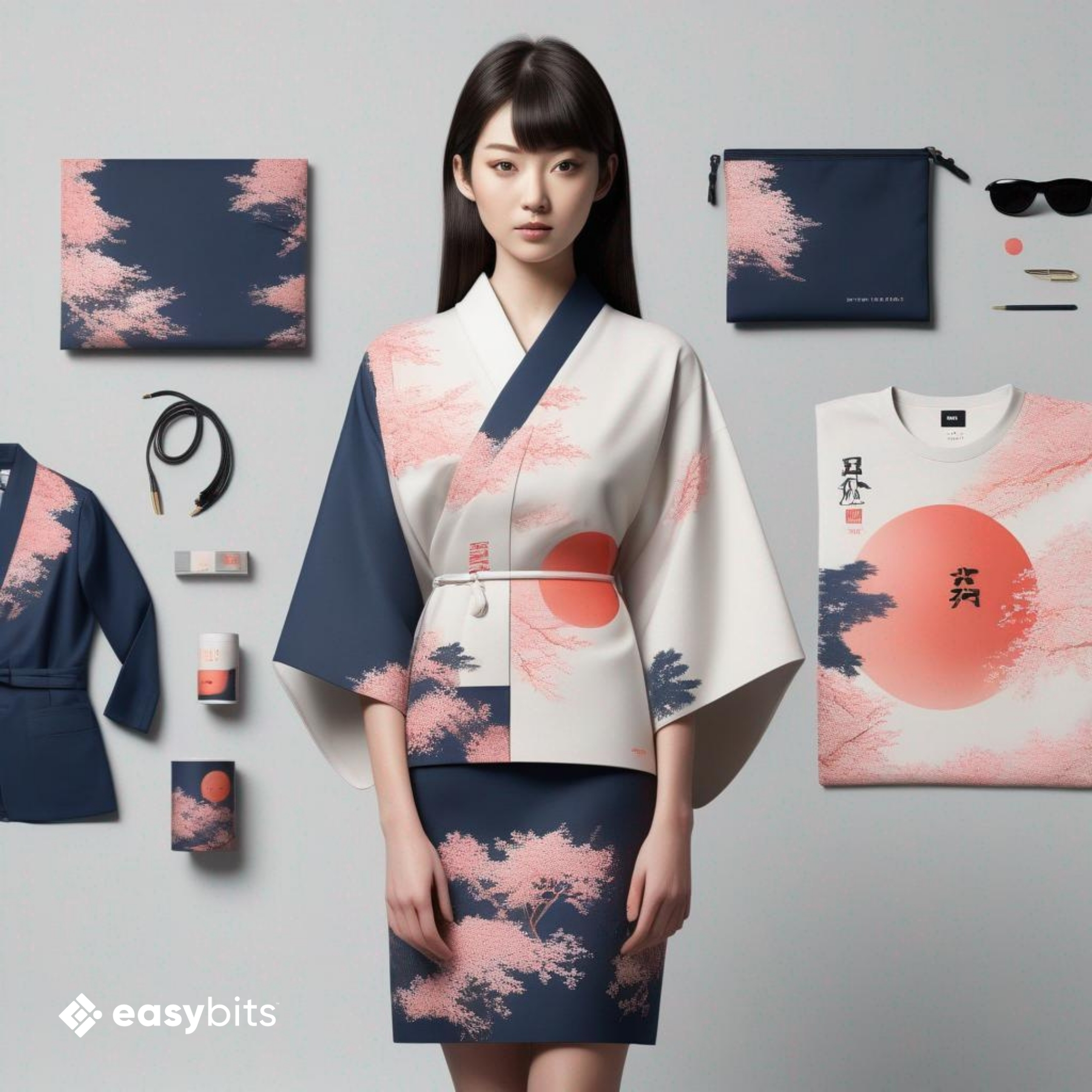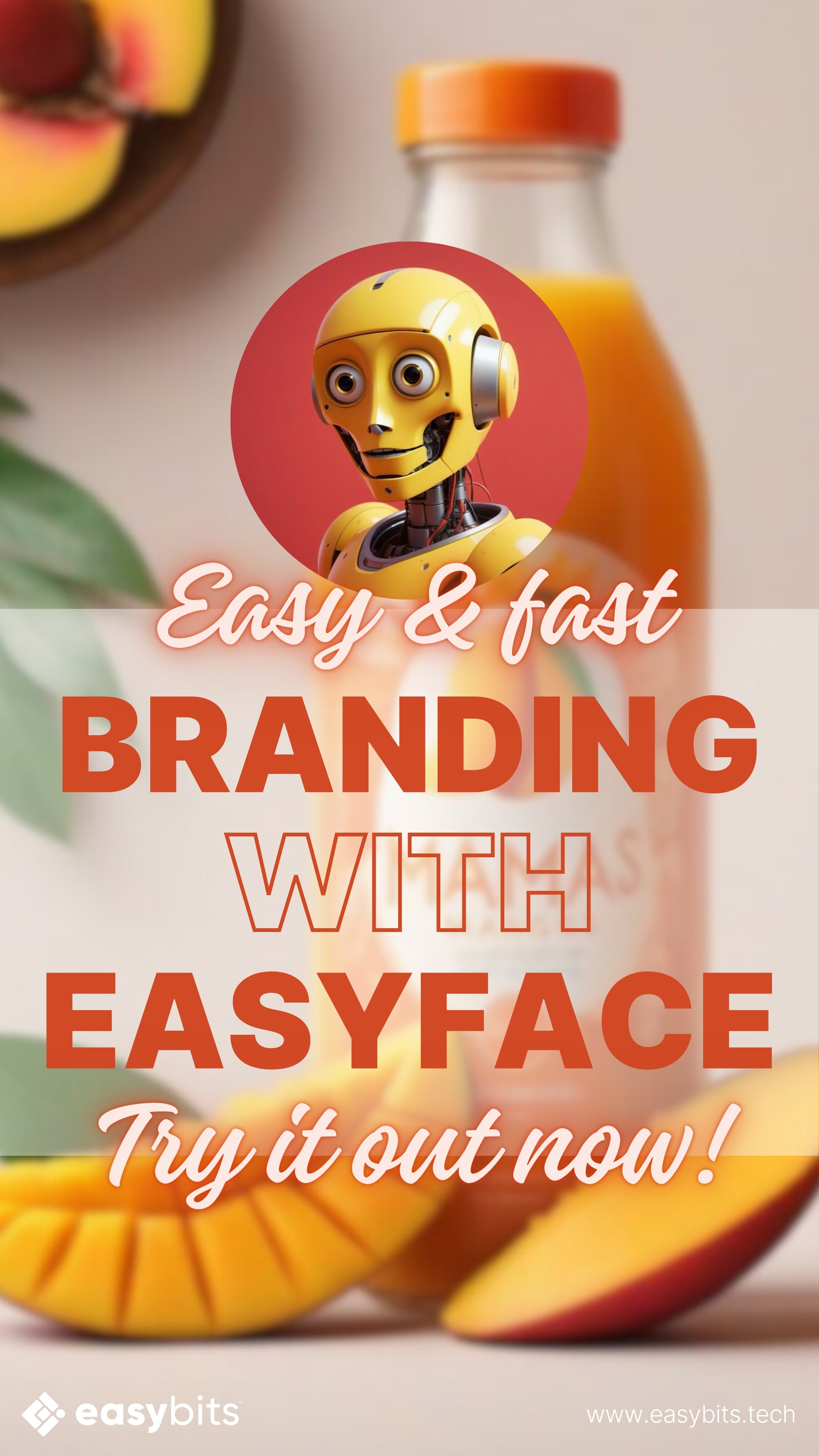Branding with Hugging Face: Introducing easyface

With easyface's - (easybits' Hugging Face Telegram integration), creating a distinctive brand identity has become more straightforward and accessible. Anyone regardless of their coding skills, can utilise generative AI through the communication interfaces they use daily. This easy accessibility offers a valuable resource for improving brand presentation.
In the current landscape, a notable trend is the reliance on intermediary platforms for interacting with AI models, which introduces additional costs and controls. However, with the direct access to Hugging Face's comprehensive capabilities via your phone, Slack, or other communication tools, the necessity to incur these extra expenses comes is necessary.
My personal experience with using easyface to tap into Hugging Face's removed the usual intimidation factor associated with AI, integrating effortlessly into my daily routine. It became so fun to spontaneously create and brainstorm brand design ideas as well as generate different outputs based on my unique prompts. Experiencing the Proteus model's interaction was like getting feedback from a friend. It made experimenting and developing unique ideas smoother. For the first time the line between automated assistant and friend in my contact list became blurred.
Introducing easyface: Your Branding Assistant
easyface transforms the way we handle branding through Telegram, streamlining the process to be more intuitive, quicker, and simpler. It is easy as messaging a friend or colleague — you input your ideas into a generative text-to-image model, and in moments, you receive artistic representations of those ideas. This capability not only speeds up the brainstorming process but also enriches your discussions with visual aids.
Want to learn how text-to-image models can transform brand design? Check out our blog article for detailed insights.
Find out more!easyface utilizes AI technology, featuring advanced models from the Hugging Face platform, to guide users through designing logos, product packaging, and selecting suitable color schemes, all without the need for prior design experience.
easyface on Telegram: Introduction to My Exploration
As part of the deployment process, I had the opportunity to test the product, which led me to experience the transformative nature of easyface for branding.

An often-overlooked aspect is our interaction with these models, as I engaged more with the model and shared my creations with friends, it felt as though I had added a new, knowledgeable friend to my contact list. Naturally using it so much my curiosity grew about the technology behind my designs, as easybits let me swap out models out at any time I really came to prefer Proteus outputs and always came back to it as my model of choice. This preference made me eager to delve deeper into Proteus, not just for its application in branding but to understand its workings. Below, I share not only how this technology can be applied to branding but also an overview of the Proteus model, sparked by my experiences with easyface.
Featured Model: Proteus the model powering my journey
The Proteus model marks a significant leap forward in AI-driven image generation, highlighting the innovative efforts of Alexander Izquierdo. As the creative mind behind both OpenDalle and Proteus, his contributions have greatly propelled the domain of AI image creation. For those interested in the cutting edge of AI image generation, Izquierdo's work is essential to follow. His ongoing projects and updates can be supported on Patreon at 'DataVoid' and followed on Twitter via 'DataPlusEngine'.
Originating from the groundwork laid by OpenDalleV1.1, Proteus goes further to refine and enhance its foundational features, leading to superior outcomes in image quality and the model's responsiveness to prompts. Here is an overview of the essential attributes of Proteus:
- Enhanced Dataset: Proteus has already a V0.4 and has been upgraded with an additional 200,000 anime-related images, supplemented by a curated set of 15,000 aesthetically appealing images aimed at improving its lighting effects. This enhancement ensures that Proteus not only better understands prompts but also retains its ability to generate photorealistic and stylistic images without losing previous learning (a problem known as catastrophic forgetting).
- Improvement: Standing as an advanced version of OpenDalleV1.1, Proteus leverages the core functionalities of its predecessor while introducing improvements in prompt responsiveness and creative output. It achieves this through fine-tuning on around 220,000 GPTV captioned images from copyright-free stock (including anime content), which have been normalized to ensure consistency and quality.
- Direct Preference Optimization (DPO): This technique is applied by evaluating 10,000 high-quality, AI-generated image pairs. DPO focuses on optimizing the model's output based on direct user preferences, which contributes to the model's enhanced creative capabilities and responsiveness to user inputs.
- Low-Rank Adaptation (LORA) Models: To refine its performance further, Proteus incorporates multiple LORA models that are trained independently and then selectively integrated into the main model. This selective incorporation is done through dynamic application methods that target specific areas of the model without disturbing its other functions. This approach allows for precise improvements, such as better depiction of complex facial features and lifelike skin textures.
- Diverse Aesthetic Mastery: Thanks to the aforementioned enhancements, Proteus excels across a wide range of visual styles, including surrealism, anime, and cartoons. It's particularly noted for its ability to render intricate details and textures, making it a versatile tool for generating images that span various aesthetic domains.
Proteus is a highly sophisticated AI model that builds upon the strengths of OpenDalleV1.1, integrating new datasets, optimization techniques, and training methods to deliver superior image generation capabilities. Its ability to understand complex prompts and produce images with enhanced lighting effects, detailed textures, and a broad aesthetic range makes it a powerful tool for creators seeking to explore new visual territories.
Facing Branding Challenges Head-On
Establishing a strong brand identity is often fraught with challenges. Many businesses, particularly smaller ones, struggle with limited resources and lack of design expertise. easybits, combined with Hugging Face, proposes a solution that streamlines the branding effort, making it more manageable and less daunting.
Curious about how the legal landscape is evolving for AI-generated art? Do not miss our blog article for an in-depth exploration of the latest developments and implications for artists and creators.
Read more!Discovering Innovative AI Models
Exploring Hugging Face, I was impressed by its repository of AI models that specialize in visual content. These tools are not just about automating design but about unleashing creativity, offering a fresh perspective on branding that can set businesses apart.
I discovered Proteus on the Hugging Face platform. This AI model is an evolution in image generation, offering nuanced capabilities for creating visual content. My exploration was aimed at understanding how Proteus could be applied to branding challenges.
Customization Meets User-Friendly Design
Hugging Face’s versatility stood out to me. It caters to both beginners and advanced users by offering customizable models. This adaptability means you can generate mockups or tweak models for specific branding needs, all through easyface’s user-friendly bot interface.

My initial interaction with Proteus involved generating images for a branding project. The task was to create a unique logo and identify a color scheme that would resonate with the target audience. It allowed me to input specific branding prompts, which it then used to generate a range of visual outputs. I used Proteus to generate various concepts based on keywords like "coffee," "warmth," "community," and "modern." The model produced diverse logo designs, each reflecting the input prompts differently.
Adaptability
The model could be fine-tuned to suit specific branding requirements. For instance, when the initial outputs needed refinement, I adjusted the prompts to include more detailed descriptions or added references to specific styles, such as "minimalist" or "vintage." This process showed Proteus's capability to tailor its outputs closely to the user's vision.
Hugging Face: The Value of Accessibility and Community
What really caught my attention was Hugging Face's community-driven approach. It's more than a platform; it's a collaborative ecosystem where ongoing model improvement is the norm. This aspect ensures that the tools evolve in response to real-world branding challenges.
My Take on Integrating Hugging Face
Considering Hugging Face for your branding strategy involves exploring relevant models for your needs, such as image generation. My exploration revealed that these models could be transformative, enhancing brand identity with a level of innovation and efficiency previously unattainable.
I appreciate how Hugging Face models act as more than just tools; they are partners in the creative process. They offer a blend of precision, variety, and efficiency that could significantly impact how brands approach design.
Why Hugging Face Models Stand Out to Me
- Practical Efficiency: They streamline creative tasks, shortening the bridge from concept to realization.
- Resourcefulness: Ideal for businesses with limited resources, offering sophisticated design solutions affordably.
- Creative Synergy: The models’ vast dataset training translates into a broad range of creative outputs, fostering unique brand identities.
AI's Role in Modern Branding: A Personal Insight
My journey into the topic highlighted AI's critical role in branding, from enhancing decision-making to boosting creative processes. Generative AI, especially, opens new avenues for innovation, making branding not just more efficient but also more dynamic and personalized.
Discover how text-to-image models are reshaping the stock photo industry. Dive into our blog article for an in-depth look.
Find out more!Utilizing Proteus through Hugging Face for branding revealed several insights. The model's ability to generate a wide range of visual content from simple prompts made it a valuable tool for brainstorming and visualizing brand identities. It demonstrated how AI could offer creative solutions that might not be immediately apparent through traditional brainstorming methods.
Conclusion
Employing Proteus through Hugging Face for branding tasks provided a practical perspective on the potential of AI in creative processes. The model's capacity to interpret prompts and produce relevant visual content efficiently made it a sticky and fun part of my branding toolkit. This experience underscored the importance of AI models like Proteus in offering adaptable, responsive solutions to branding challenges, backed by a community-driven platform that ensures continuous improvement and relevance in a fast-evolving market.
The integration between Hugging Face and easybits exemplifies the future of inclusive AI development, transforming the relationship even non coders have with discovering and utilising generative AI for task automation.
Do you want to try it out yourself? Simply click the button below and begin creating with easyface on Telegram
Start creating!Check this video to find out more
